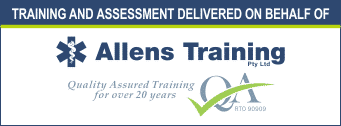Ever seen someone faint? It can be quite dramatic, like something out of a movie. One minute they’re standing, the next they’re on the floor, usually leaving everyone around in a bit of a panic. But don’t worry, knowing a bit about fainting and how to help can make a big difference. Let’s dive into the world of fainting, why it happens, and what you can do when someone has a swoon moment.
Table of Contents

What is Fainting?
Fainting, also known as syncope (a fancy term, right?), is when someone suddenly loses consciousness for a short period. It happens because the brain briefly doesn’t get enough blood flow, which means not enough oxygen. When the brain is deprived of oxygen, even for a few seconds, it makes a person pass out. But fear not, most faints are brief and not a sign of anything serious.
Why Do People Faint?
People faint for all sorts of reasons, some of them quite amusing in hindsight. Here are a few common triggers:
- Standing Up Too Fast: Have you ever jumped out of bed in the morning and felt dizzy? That’s because standing up quickly can cause a sudden drop in blood pressure.
- Heat: On a scorching hot day, being outside too long can make you feel faint. Our bodies sometimes struggle to keep cool.
- Emotional Shock: Imagine you’ve just found out you won the lottery – your heart races, you get dizzy, and boom, you’re on the floor!
- Seeing Blood: Surprisingly, some people faint at the sight of blood, even their own. It’s like their brain decides, “Nope, I’m out!”
Pre Warning Signs and Symptoms
Presyncope (another fancy word) is the medical term for describing the ‘warning’ indicators just before a person faints. The signs and symptoms may include:
- Feeling faint, lightheaded and dizzy
- Experiencing nausea
- Having greying, tunnel vision
- The person may appear pale or have a change in skin colour
What to Do When Someone Faints
Now, onto the important part – what should you do if someone faints? Here’s a simple guide to follow:
- Stay Calm: First things first, don’t panic. Take a deep breath and keep a clear head.
- Check for Danger: Make sure the person who fainted is in a safe place. If they’re lying in the middle of a busy street (hopefully not!), move them to a safer spot if you can.
- Check Responsive: If the person is unresponsive and not breathing normally, send for help (000) and start CPR.
- Lay Them Down: If breathing normally, help the person lie flat on their back. Raise their legs about 030 centimetres off the ground (unless they have injuries to prevent this). This helps blood flow back to the brain.
- Loosen Tight Clothing: If they’re wearing anything tight like a tie or a belt, loosen it to help them breathe easier.
- Stay With Them: Keep the person lying down and stay with them until they fully regain consciousness. Talk to them calmly and reassure them.
- Offer Water: Once they’re awake and alert, offer them some water. Avoid giving them any food or drink if they’re still feeling unsteady or drowsy.
When to Seek Medical Help
Most fainting spells are harmless, but there are times when you should seek medical help. Call emergency services if:
- The person has trouble breathing or doesn’t regain consciousness quickly.
- They are pregnant.
- They have a heart condition or history of heart problems.
- They fell and hurt themselves when they fainted.
- The fainting episode happened while they were exercising or without any obvious trigger.
Preventing Fainting
While it’s not always possible to prevent fainting, here are a few tips to reduce the risk:
- Stay Hydrated: Drink plenty of water, especially on hot days.
- Eat Regularly: Skipping meals can cause low blood sugar, which might make you faint.
- Take Your Time: When getting up from sitting or lying down, do it slowly to give your blood pressure time to adjust.
- Avoid Overheating: Wear cool, loose clothing in hot weather and take breaks if you’re feeling too warm.
- Manage Stress: Find ways to manage stress and anxiety. Techniques like deep breathing or meditation can help keep your nervous system in check.
Personal Touch: My Own Fainting Story
Let me share a little story. I once fainted during a school assembly. It was a hot day, and I hadn’t had much for breakfast. I remember feeling dizzy and seeing spots before everything went black. When I came to, I was lying on the floor with a teacher fanning me with a notebook. It was embarrassing, but I learned the hard way the importance of staying hydrated and eating properly.
Learning First Aid: Be Prepared

Knowing first aid can be incredibly helpful in situations like these. At My First Aid Course Brisbane, we offer a comprehensive Provide First Aid course that covers how to handle fainting and many other emergencies. Our courses are delivered by experienced professionals and are nationally recognised, ensuring you’re prepared no matter where you are in Australia.
Not only do we cover the practical skills you need, but we also ensure the training is engaging, fun and informative. Plus, we’re proud to be the highest-reviewed training provider in the Brisbane area. So, if you want to be ready to help in an emergency, consider joining one of our courses.
Conclusion
Fainting can be a bit scary, but with the right knowledge and a calm approach, you can help someone recover quickly and safely. Remember, it’s usually not serious, but knowing what to do can make all the difference. Stay hydrated, take your time standing up, and if you ever find yourself winning the lottery, maybe sit down first to avoid a dramatic fainting episode!
For more information on first aid and to sign up for a course, visit My First Aid Course Brisbane. Let’s be prepared to help each other, one faint at a time.






